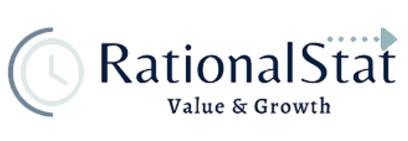
Laser skin resurfacing is a popular cosmetic procedure that has been used for many years to improve the appearance of the skin. The procedure uses laser technology to remove the outer layers of damaged skin, revealing fresher, smoother, and younger-looking skin underneath.
This article will discuss everything you need to know about laser skin resurfacing, including how it works, the types of lasers used, the benefits and risks, and what to expect during and after the procedure.
How Does Laser Skin Resurfacing Work?
Laser skin resurfacing works by using a high-energy beam of light to remove the outer layers of the skin. The laser heats the skin, which causes the outer layer to peel away. As the skin heals, new skin cells grow, resulting in a smoother, more even complexion. The laser can also stimulate the production of collagen, a protein that gives the skin its elasticity and firmness.
Types of Lasers Used
There are two main types of lasers used for skin resurfacing: ablative and non-ablative.
- Ablative lasers: It removes the outer layers of skin and are more effective at treating deeper wrinkles, scars, and sun damage.
- Non-ablative lasers: It works by heating the skin without removing the outer layer and are used to treat milder skin imperfections, such as fine lines and uneven skin tone.
Benefits and Risks
The benefits of laser skin resurfacing include improved skin texture, reduced wrinkles, and a more even skin tone. It can also reduce the appearance of scars and sun damage.
However, there are some risks associated with the procedure, including redness, swelling, and discomfort. In rare cases, laser skin resurfacing can cause infection, scarring, or changes in skin color.
It is important to discuss the risks and benefits of the procedure with a qualified healthcare professional before deciding to undergo the treatment.
What to Expect During the Procedure?
Laser skin resurfacing is typically performed on an outpatient basis and does not require general anesthesia. Before the procedure, the skin is cleaned and numbed with a local anesthetic. The laser is then directed at the skin, and the outer layers are removed. The procedure can take anywhere from a few minutes to several hours, depending on the size of the treatment area.
What to Expect After the Procedure?
After laser skin resurfacing, the skin will be red and swollen and may feel like it has been sunburned. The treated area will need to be protected from the sun and kept clean and moisturized. It is important to follow the healthcare professional's instructions for aftercare to ensure proper healing and minimize the risk of infection or other complications.
Laser Cosmetic Surgery Market
As per RationalStat market research report, the global laser cosmetic surgery market is anticipated to experience an impressive growth rate of 14.5% over the period 2022-2028. Laser cosmetic surgery is used for various treatments, including diminishing scars and wrinkles, balancing skin color, and encouraging the development of collagen fibers, among other things.
The increasing demand for non-invasive or less invasive treatments, the aging population, and the technological advances in laser cosmetic surgery are among the main drivers for the global laser cosmetic surgery market.
AI Technology: The Future of Skin Lasers
Skin laser technology has been rapidly evolving over the years, and AI is poised to play a significant role in the future of this field with the increasing the security and efficiency of lasers to a new level. Although AI has been used in a few areas of aesthetics, we've only scratched the surface of what could be a game changer in cosmetic dermatology.
AI could be used to analyze a patient's skin type, medical history, and other factors to create a personalized treatment plan. This could help doctors choose the most effective laser treatment for each patient and reduce the risk of complications. The future of skin laser technology looks very promising, and AI is likely to play a significant role in advancing this field in the coming years.
Conclusion
Laser skin resurfacing is a safe and effective way to improve the appearance of the skin. It can reduce wrinkles, improve skin texture, and even out skin tone. However, as with any medical procedure, there are risks involved. It is important to discuss the risks and benefits of the procedure with a qualified healthcare professional before deciding to undergo the treatment. If you are considering laser skin resurfacing, be sure to choose a reputable provider who has experience with the procedure to ensure the best possible outcome.
To know more about the current market scenario for the latest trends in the laser skin resurfacing market, contact us.

Ujjwal Parwal
Co-founder and Director at RationalStat
Ujjwal is a thought leader and recognized expert in the market research and consulting field. He is the co-founder at RationalStat, a leading global market research & procurement intelligence firm with 10+ years of industry expertise.







You must be logged in to post a comment.